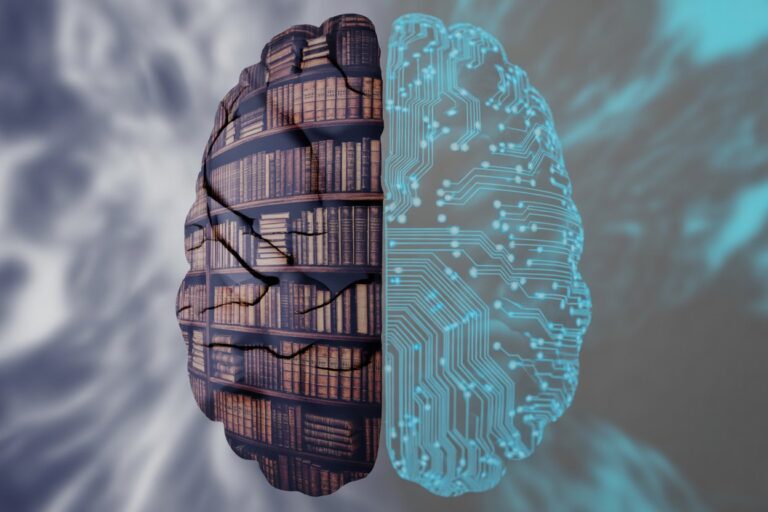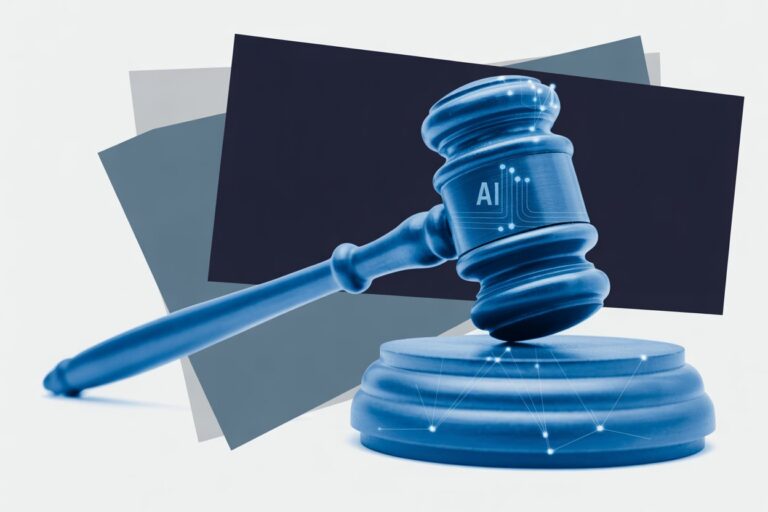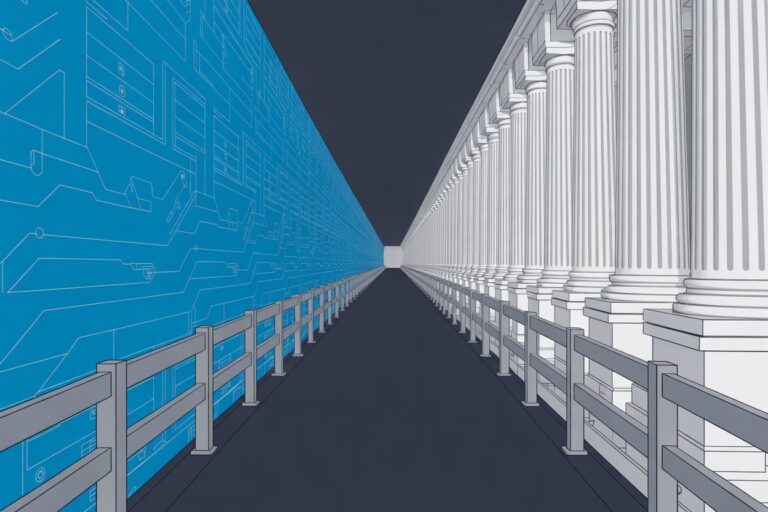When Rules Meet Reason: How Hybrid AI Could Save Legal Tech from Itself
When the speed of generative models meets the brittleness of pure logic, the legal AI field may finally be ready for a new architecture, one where rule-based expert systems and large language models work together, not in opposition. In the practice of law, where reliability, explainability and professional accountability are non-negotiable, the hybrid model may offer a path to restoring the trust that many “pure” AI systems have fractured.
The Reliability Recession in Legal AI
The recent surge in deployments of large language models (LLMs) in legal workflows has revealed a familiar issue: impressive fluency with dubious grounding. As courts and bar associations have begun to flag the risks of AI-generated legal content, the profession finds itself in a reliability recession. A comprehensive database tracking AI hallucination cases has documented 486 judicial decisions where generative AI produced fabricated content, representing an epidemic of professional failures rather than isolated incidents.
In the absence of robust internal constraints, an LLM may hallucinate a case, misapply a statute or misstate a doctrine, and yet deliver it in persuasive legal prose. Lawyers remain accountable for those outputs. The architecture driving those outputs matters.
What Went Wrong with “Pure” LLMs
Large language models shine at generating text that looks right, but law rewards text that is right. Research confirms that LLMs trained on legal corpora still struggle with reasoning, causation, and precision.
The consequences have played out dramatically in courtrooms. In Mata v. Avianca, Inc., Judge P. Kevin Castel imposed sanctions on attorneys who submitted fictional case citations generated by ChatGPT, ordering $5,000 in penalties. More recently, courts nationwide have promulgated standing orders addressing AI misuse, with hallucinated citations becoming the primary reason for sanctions.
In July 2024, the American Bar Association released Formal Opinion 512, its first formal guidance on generative AI use in legal practice. The Opinion makes clear that under Model Rule 1.1, lawyers must have a reasonable understanding of AI tools’ capabilities and limitations, must verify all AI-generated output, and cannot charge clients for time spent learning AI tools. If the architecture lacks built-in validation or audit-trail mechanisms, then compliance becomes illusory.
Rediscovering Expert Systems in Legal Tech
Before the generative-AI wave, law was among the earliest adopters of symbolic or rule-based systems. HYPO, developed by Kevin Ashley in the late 1980s, was a case-based reasoning system that evaluated legal problems in trade secret law by comparing them with cases from its knowledge base. SHYSTER, developed by James Popple in 1993, demonstrated that a useful legal expert system could be based upon pragmatic, simplified reasoning rather than complex jurisprudential theories.
These systems were lean, auditable and precise: good at specific rule-sets, poor at natural-language adaptability. Their downfall came less from failure than from fashion; they were supplanted by statistical AI models that promised generality but delivered less explainability. The advantage of a rule-based system is that it forces articulation of logic: if A then apply B, and document the path. In a profession where “Why did you decide this?” is as important as “What did you decide?”, that transparency matters.
How Hybrid Architectures Work
Hybrid AI architectures draw a line between logic and fluency: the rule or expert-system layer anchors legal norms, constraints and verification; the neural layer handles natural-language comprehension, drafting and user-interaction. The result: a system that can generate text and subject it to rule-based checks, provenance tracing and constraint enforcement.
Recent academic frameworks propose such integrations explicitly. A 2025 paper outlines a combined expert-system plus knowledge-graph architecture to address inaccuracy in legal services. Another study discusses a hybrid parameter-adaptive retrieval system where knowledge graphs supervise LLM outputs in legal contexts.
Key components of a hybrid legal-AI system include: structured repositories of statutes and case law; symbolic validators that enforce constraints before output is surfaced; neural interfaces for natural-language interaction; and audit trails carrying metadata about what prompt, what rules applied, what system version, what sources. Hybrid systems also align with explainable-AI research, which seeks to make model reasoning traceable and interpretable in regulated contexts.
Market Response: Vendors Seeking Reliability
The legal technology market’s response to reliability concerns has triggered strategic realignments. In June 2025, Harvey announced a strategic alliance with LexisNexis, integrating primary law content and Shepard’s Citations. This addresses what had been Harvey’s critical weakness: access to authoritative legal databases. Harvey customers can now receive AI-generated answers grounded in verified case law and statutes.
Thomson Reuters has made substantial investments in generative AI, having acquired Casetext for $650 million and invested over $200 million in generative AI in 2024. Meanwhile, emerging AI-native law firms are experimenting with novel operational models. Garfield Law, a UK-based firm described as the world’s first AI-native law firm, has built its entire practice around automated workflows and AI-driven client intake, demonstrating how legal service delivery might evolve when designed from the ground up with AI capabilities.
Comparative testing by law librarians found that while major platforms demonstrated competency in answering basic legal questions, each showed distinct strengths and occasional inconsistencies. The librarians’ takeaway: AI-assisted tools should be viewed as starting points rather than definitive sources.
Why Hybrid Matters for Legal Professionals
The legal profession is built on accountability. Courts, clients and regulators care about how you got an answer, not just the answer itself. Under U.S. legal ethics standards, lawyers are accountable for the means and not just the output. Hybrid architectures directly address that obligation by providing visibility into limitations: you can trace whether a statutory constraint was applied, which expert-module flagged a conflict, which data source fed the LLM.
From a governance perspective, the National Institute of Standards and Technology’s AI Risk Management Framework provides a blueprint for trustworthy AI, emphasising reliability, transparency and audit-readiness across the AI lifecycle. A hybrid architecture aligns neatly: the symbolic layer handles constraint-enforcement, the neural layer provides flexibility, the audit-trail ensures traceability.
International Context for Hybrid Models
The push toward hybrid AI is not confined to the U.S. The EU’s AI Act, which entered into force on August 1, 2024, establishes a risk-based approach classifying AI systems by their potential for harm. AI systems used in legal processes fall into high-risk categories requiring conformity assessments, technical documentation, risk management systems, and human oversight. The Act’s emphasis on explainability and auditability directly supports hybrid architectural approaches.
Beyond regulation, international standards offer guidance. ISO/IEC 42001:2023, the first international standard for AI management systems, specifies requirements for establishing, implementing, and maintaining an Artificial Intelligence Management System. The standard addresses ethical considerations, transparency, and continuous learning while providing a structured way to manage AI-related risks and opportunities. Organizations implementing hybrid architectures can align with ISO/IEC 42001’s framework to demonstrate responsible AI governance.
Risks and Open Challenges
Hybrid AI is no panacea. Combining symbolic and neural systems introduces complexity: version-control across layers, maintenance of rule-bases, alignment of knowledge graphs with evolving law, and managing performance bottlenecks. Without proper governance, the hybrid system may look auditable but still allow gaps, especially if human review becomes superficial.
Another risk is over-confidence: professionals may assume that because a system has a rule layer, it is inherently safe, yet the symbolic layer might be outdated or mis-configured. Human oversight remains indispensable. For now, the hybrid model elevates the design of the tool; it does not eliminate the lawyer’s judgment.
Cost considerations also merit attention. Industry analysts have projected that dual licensing arrangements combining AI platform subscriptions with legal content API access could increase per-lawyer costs by 15-25 percent. For mid-sized firms and in-house legal departments, these costs must be weighed against risk mitigation benefits and potential efficiency gains.
Where Human Judgment Meets Machine Architecture
The real promise of hybrid AI in the legal domain lies in reconciliation, not replacement. Experts once feared that generative models would render rule-based systems obsolete. Instead, a hybrid approach acknowledges that generative and symbolic AI are complementary. In a legal context where accountability matters, hybrid architectures may restore trust, enforce constraints, and provide audit trails. Machines generate; rules verify. Lawyers supervise.
The question the profession must ask is no longer simply “Should we use AI?” but “What architecture did we use, and can we justify it?” As hybrid models gain traction, the bar for competent AI usage in legal practice will rise. The future of legal tech may not belong to the fastest model, but to the most reliable, traceable one.
Sources
- American Arbitration Association, “Inside the World’s First AI-Native Law Firm” (2024)
- American Bar Association, “ABA Issues First Ethics Guidance on AI Tools” (July 29, 2024)
- American Bar Association, “Common Issues in AI Sanction Jurisprudence” (September 2024)
- Artificial Intelligence Act, “Article 6: Classification Rules for High-Risk AI Systems” (EU) 2024/1689
- Artificial Lawyer, “Harvey + LexisNexis – The Potential Pricing Impact” (June 30, 2025)
- Ashley, K.D., “Reasoning with Cases and Hypotheticals in HYPO,” Int. J. Man-Machine Studies (1991)
- Charlotin, D., “AI Hallucination Cases Database” (2025)
- Garrido-Merchán, E.C., & Puente, C., “GOFAI Meets Generative AI,” arXiv:2507.13550 (July 2025)
- International Organization for Standardization, “ISO/IEC 42001:2023” (December 2023)
- Kalra, R., et al., “HyPA-RAG: Hybrid Parameter Adaptive RAG,” arXiv:2409.09046 (August 2024)
- LawSites, “Harvey-LexisNexis Partnership Announced” (June 18, 2025)
- Mata v. Avianca, Inc., Opinion and Order on Sanctions (S.D.N.Y. June 22, 2023)
- Nasir, S., et al., “Framework for Reliable Legal AI,” arXiv:2412.20468v2 (March 2025)
- National Institute of Standards and Technology, “AI Risk Management Framework” (January 2023)
- Popple, J., “SHYSTER: A Pragmatic Legal Expert System,” Ph.D. Thesis, ANU (1993)
This article was prepared for educational and informational purposes only. It does not constitute legal advice and should not be relied upon as such. All sources cited are publicly available through academic repositories, government websites, legal databases, and reputable publications. Readers should consult professional counsel for specific legal or compliance questions related to AI use.
See also: Can Machines Be Taught to Obey Laws They Can’t Understand?







